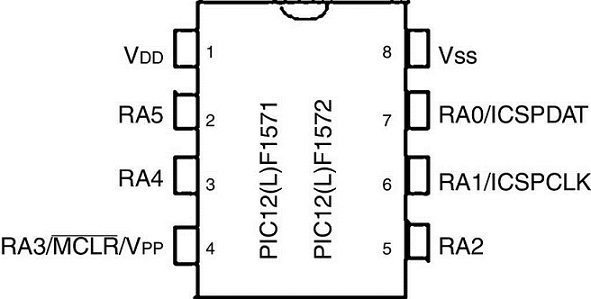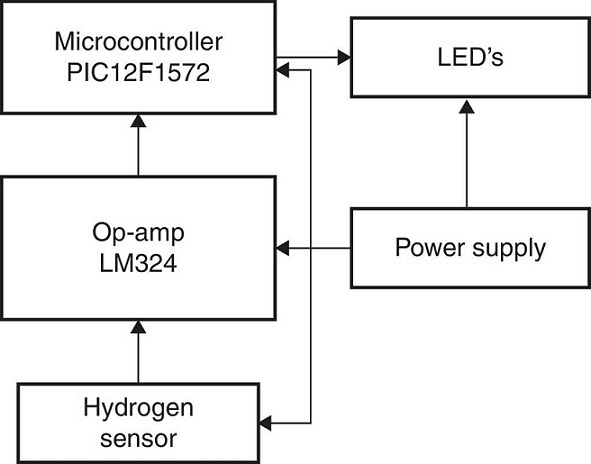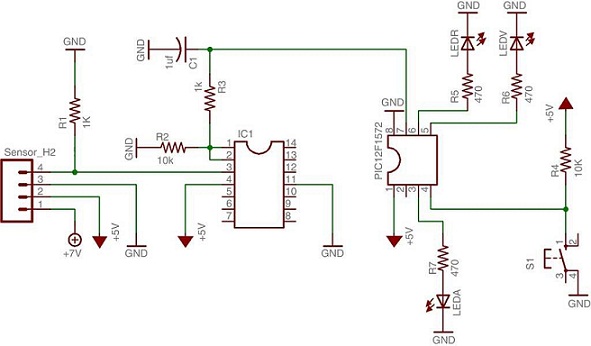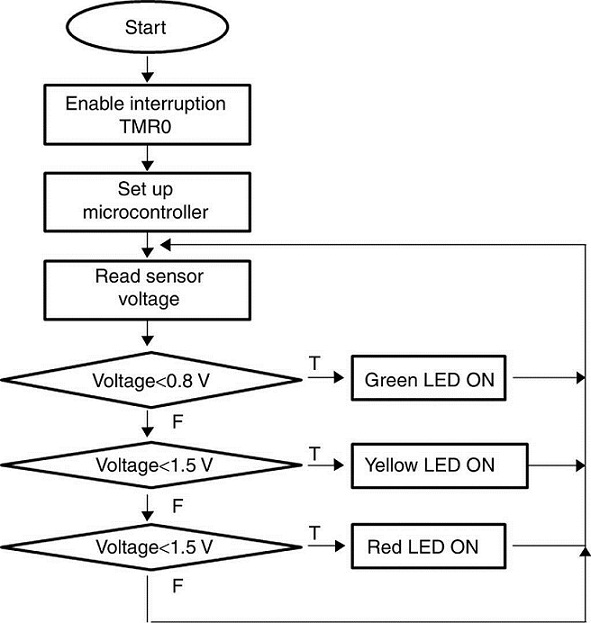1. Introduction
The liquid phase epitaxy technique used to fabricate optoelectronic devices is performed under a hydrogen atmosphere. This is done to prevent oxidation of the substrates and the liquid solutions; otherwise, the quality and characteristics of the components would be affected.
Once the materials have been introduced to the growth system, it is evacuated to remove gaseous pollutants. After evacuation, a flow of hydrogen is used to drag the remaining gases and thus purify the system. Furthermore, when the system is heated, oxygen reacts with the hydrogen and prevents the oxidation problems mentioned earlier.
The problem with using hydrogen is that it is highly flammable and, at concentrations in the atmosphere above 4%, it becomes dangerous because it can cause explosions of different magnitudes. Thus it is necessary to monitor the levels of hydrogen concentration in the liquid phase epitaxy laboratory. When a hydrogen concentration higher than normal is detected, it is necessary to find the source that gives rise to such concentration (Mishournyi, Hernández del Castillo, Gorvatchev, & Lastras Martínez, 2002).
The system reported here allows the detection of abnormal concentrations of hydrogen in the laboratory and locating the sources or points where the hydrogen is leaking (Sánchez-Niño & De Anda Salazar, 2015).
2. Portable card design
The design of this card is based on a PIC12F1572 microcontroller whose main features are:
A 49-instruction set and a 16 levels stack.
Internal clock speed of 31 kHz to 32 MHz.
Three pulse-width-modulation (PWM) modules 16-bit, complementary waveform generator (CWG) and four internal 10-bit analog-digital converter (ADC) modules.
One digital-analog converter (DAC) of 5 bits and one comparator.
Two 8-bit timers, timer 0 (TMR0), timer 2 (TMR2) and one 16-bit timer, timer 1 (TMR1).
It is a new generation 8-pin plastic dual in-line package (PDIP) encapsulated microcontroller used in a variety of applications such as light emitting diodes (LED) lighting systems, control stepper motors, direct current (DC) motors, power supplies, and general purpose applications. In Figure 1, the pinout and the encapsulation of the PIC are shown (Microchip, 2004).
The card is based on this microcontroller as the main brain (Microchip, 2014). Figure 2 shows the block diagram of the detector card. The hydrogen (H2) sensor used is a commercial solid state gas sensor that can detect concentrations of hydrogen gas as low as 10 ppm. The H2 sensor requires a 5.4 VDC power supply. The output resistance of the sensor decreases as the hydrogen concentration detected increases. The sensor's output resistance is connected to a load resistance as a voltage divider. The signal on the load resistance is coupled to a LM324 operational amplifier configured as a unity follower to match the output impedance of the sensor and then the operational amplifier output is fed to the microcontroller via the RA0 input. The LM34 was chosen because it can be powered by a single power supply voltage (Microchip, 2004).
The reading from the H2 sensor is digitalized by the internal analog-digital converter and then it is compared internally with three preset levels indicating the concentration of H2 gas (Microchip, 2001). Depending on the value of the sensor output, one of the LEDs that are on the card is turned on according to Table 1.
Table 1 Preset values to turn on the LEDs.
| Command | Voltage (V) | LED |
|---|---|---|
| Safe | 0.0-0.8 | Green |
| Warning | 0.8-1.5 | Yellow |
| Danger | 1.5-5.0 | Red |
Figure 3 shows the schematic diagram of the card design. The final size of the card is approximately 10.0 cm long by 5.0 cm wide; the system is powered by a rechargeable 9-V battery that feeds a 7805-Ve regulator which provides the supply voltage of the microcontroller, sensor and LM324 operational. Besides this, a LM317 is used to provide a heating voltage of 5.4 V for the hydrogen sensor (SYNKERA, 2010).
3. Software
Although the PIC12F1572 is a low range microcontroller it can support programming languages such as "C" and assembler. The program was developed in the PIC C compiler. Figure 4 shows the flowchart implemented for the application (CCS, 2010).
The microcontroller constantly reads the output voltage of the hydrogen sensor and compares this value with three predefined voltages, while the output voltage is below 800 mV the green LED is illuminated indicating that the concentration of H2 is safe and there is no explosion danger when performing the experiment. If the voltage read by the analog-digital converter is below 1.5 V and above 800 mV, the amber LED is activated indicating an H2 concentration higher than normal and thus the existence of a small hydrogen leak. If the voltage from the sensor exceeds the value of 1.5 V, the red LED its turned on indicating a large leak of gas. In this case, it is necessary to stop the process and protect the staff in a safe place. It is worth mentioning that the LEDs were programmed to blink at different frequencies according to Table 2.
4. Conclusions
A card to detect hydrogen was designed and built to be portable, it is fed by batteries and has been tested to verify proper operation, the sensor reading remains between 40 and 80 mV in the absence of additional hydrogen in the atmosphere.
The response of the card to hydrogen leakage levels was measured by immersing the detector in a gas mixture containing 95% argon and 5% hydrogen. By changing the distance between the gas mixture source and the card, each LED is turned on as programmed. The card allowed detecting some small leaks that would be difficult to locate using other methods. Also, the visual indicators warn the users of abnormal gas concentrations in the laboratory.











 nueva página del texto (beta)
nueva página del texto (beta)






